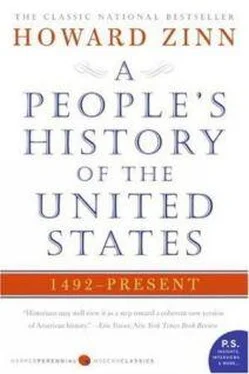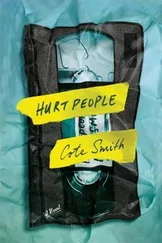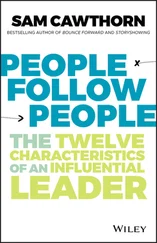Howard Zinn - A People
Здесь есть возможность читать онлайн «Howard Zinn - A People» весь текст электронной книги совершенно бесплатно (целиком полную версию без сокращений). В некоторых случаях можно слушать аудио, скачать через торрент в формате fb2 и присутствует краткое содержание. Издательство: Harper-Collins, Жанр: Фэнтези, на английском языке. Описание произведения, (предисловие) а так же отзывы посетителей доступны на портале библиотеки ЛибКат.
- Название:A People
- Автор:
- Издательство:Harper-Collins
- Жанр:
- Год:неизвестен
- ISBN:нет данных
- Рейтинг книги:4 / 5. Голосов: 1
-
Избранное:Добавить в избранное
- Отзывы:
-
Ваша оценка:
- 80
- 1
- 2
- 3
- 4
- 5
A People: краткое содержание, описание и аннотация
Предлагаем к чтению аннотацию, описание, краткое содержание или предисловие (зависит от того, что написал сам автор книги «A People»). Если вы не нашли необходимую информацию о книге — напишите в комментариях, мы постараемся отыскать её.
A People — читать онлайн бесплатно полную книгу (весь текст) целиком
Ниже представлен текст книги, разбитый по страницам. Система сохранения места последней прочитанной страницы, позволяет с удобством читать онлайн бесплатно книгу «A People», без необходимости каждый раз заново искать на чём Вы остановились. Поставьте закладку, и сможете в любой момент перейти на страницу, на которой закончили чтение.
Интервал:
Закладка:
At the end of the eighties, at least a third of African-American families fell below the official poverty level, and black unemployment seemed fixed at two and a half times that of whites, with young blacks out of work at the rate of 30 to 40 percent. The life expectancy of blacks remained at least ten years lower than that of whites. In Detroit, Washington, and Baltimore, the mortality rate for black babies was higher than in Jamaica or Costa Rica.
Along with poverty came broken homes, family violence, street crime, drugs. In Washington, D.C., with a concentrated population of black poor within walking distance of the marbled buildings of the national government, 42 percent of young black men between the ages of eighteen and thirty- five were either in jail, or out on probation or parole. The crime rate among blacks, instead of being seen as a crying demand for the elimination of poverty, was used by politicians to call for the building of more prisons.
The 1954 Supreme Court decision in Brown v. Board of Education had begun the process of desegregating schools. But poverty kept black children in ghettos and many schools around the country remained segregated by race and class. Supreme Court decisions in the seventies determined that there need be no equalization of funds for poor school districts and rich school districts ( San Antonio Independent School District v. Rodriguez ) and that the busing of children need not take place between wealthy suburbs and inner cities ( Milliken v. Bradley ).
To admirers of free enterprise and laissez-faire, those people were poor who did not work and produce, and so had themselves to blame for their poverty. They ignored the fact that women taking care of children on their own were working very hard indeed. They did not ask why babies who were not old enough to show their work skills should be penalized-to the point of death-for growing up in a poor family.
Ironically, it was Republican Kevin Phillips who, analyzing the Reagan years, wrote: "Less and less wealth was going to people who produced something… disproportionate rewards to society's economic, legal and cultural manipulators-from lawyers to financial advisers."
In the mid-eighties, a major scandal began to emerge in Washington. The deregulation of the savings and loan banks begun in the Carter administration had continued under Reagan, leading to risky investments which drained the assets of the banks, leaving them owing billions of dollars to depositors, which the government had insured.
As the years went by and the problem was kept behind a screen, it was going to take more and more money to pay depositors and bail out these banks. The figure began to reach $200 billion. During the 1988 presidential campaign, the Democratic candidate Michael Dukakis was restrained from pointing the finger at the Republican administration because the Democrats in Congress were heavily involved in bringing about and then covering up the situation. So the voters were kept in the dark.
The enormous drain of money from the treasury for defense had once been declared by President Eisenhower to be a «theft» from human needs. But it was accepted by both parties, as Democrats competed with Republicans to show the electorate how «tough» they were.
Jimmy Carter as president had proposed a $ 10 billion increase in the military budget, an enactment of exactly what Eisenhower had described. All of the huge military budgets of the post-World War II period, from Truman to Reagan and Bush, were approved overwhelmingly by both Democrats and Republicans.
The spending of trillions of dollars to build up nuclear and nonnuclear forces was justified by fears that the Soviet Union, also building up its military forces, would invade Western Europe. But George Kennan, the former ambassador to the Soviet Union and one of the theoreticians of the cold war, said this fear had no basis in reality. And Harry Rositzke, who worked for the CIA for twenty- five years and was at one time CIA director of espionage operations against the Soviet Union, wrote in the 1980s: "In all of my years in government and since I have never seen an intelligence estimate that shows how it would be profitable to Soviet interests to invade Western Europe or to attack the United States."
However, the creation of such a fear in the public mind was useful in arguing for the building of frightful and superfluous weapons. For instance, the Trident submarine, which was capable of firing hundreds of nuclear warheads, cost $1.5 billion. It was totally useless except in a nuclear war, in which case it would only add several hundred warheads to the tens of thousands already available. That $1.5 billion was enough to finance a five-year program of child immunization around the world against deadly diseases, and prevent five million deaths (Ruth Sivard, World Military and Social Expenditures 1981–1988 ).
In the mid-1980s, an analyst with the Rand Corporation, which did research for the Defense Department, told an interviewer in an unusually candid statement, that the enormous number of weapons was unnecessary from a military point of view, but were useful to convey a certain image at home and abroad:
If you had a strong president, a strong secretary of defense they could temporarily go to Congress and say, "We're only going to build what we need… And if the Russians build twice as many, tough." But it would be unstable politically… And it is therefore better for our own domestic stability as well as international perceptions to insist that we remain good competitors even though the objective significance of the competition is… dubious.
In 1984, the CIA admitted that it had exaggerated Soviet military expenditures, that since 1975 it had claimed Soviet military spending was growing by 4 to 5 percent each year when the actual figure was 2 percent. Thus, by misinformation, even deception, the result was to inflate military expenditures.
One of the favorite military programs of the Reagan administration was the Star Wars program, in which billions were spent, supposedly to build a shield in space to stop enemy nuclear missiles in midair. But the first three tests of the technology failed. A fourth test was undertaken, with government funding for the program at stake. There was another failure, but Reagan's Secretary of Defense, Caspar Weinberger, approved the faking of results to show that the test had succeeded.
When the Soviet Union began to disintegrate in 1989, and there was no longer the familiar "Soviet threat," the military budget was reduced somewhat, but still remained huge, with support from both Democrats and Republicans. In 1992, the head of the House Armed Services Committee, Les Aspin, a Democrat, proposed, in view of the new international situation, that the military budget be cut by 2 %, from $281 billion to $275 billion.
That same year, as Democrats and Republicans both supported minor cuts in the military budget, a public opinion survey done for the National Press Club showed that 59 percent of American voters wanted a 50 percent cut in defense spending over the next five years.
It seemed that both parties had failed in persuading the citizenry that the military budget should continue at its high level. But they continued to ignore the public they were supposed to represent. In the summer of 1992, Congressional Democrats and Republicans joined to vote against a transfer of funds from the military budget to human needs, and voted to spend $120 billion to «defend» Europe, which everyone acknowledged was no longer in danger-if it ever had been- from Soviet attack.
Democrats and Republicans had long been joined in a "bipartisan foreign policy," but in the Reagan-Bush years the United States government showed a special aggressiveness in the use of military force abroad. This was done either directly in invasions, or through both overt and covert support of right-wing tyrannies that cooperated with the United States.
Читать дальшеИнтервал:
Закладка:
Похожие книги на «A People»
Представляем Вашему вниманию похожие книги на «A People» списком для выбора. Мы отобрали схожую по названию и смыслу литературу в надежде предоставить читателям больше вариантов отыскать новые, интересные, ещё непрочитанные произведения.
Обсуждение, отзывы о книге «A People» и просто собственные мнения читателей. Оставьте ваши комментарии, напишите, что Вы думаете о произведении, его смысле или главных героях. Укажите что конкретно понравилось, а что нет, и почему Вы так считаете.












